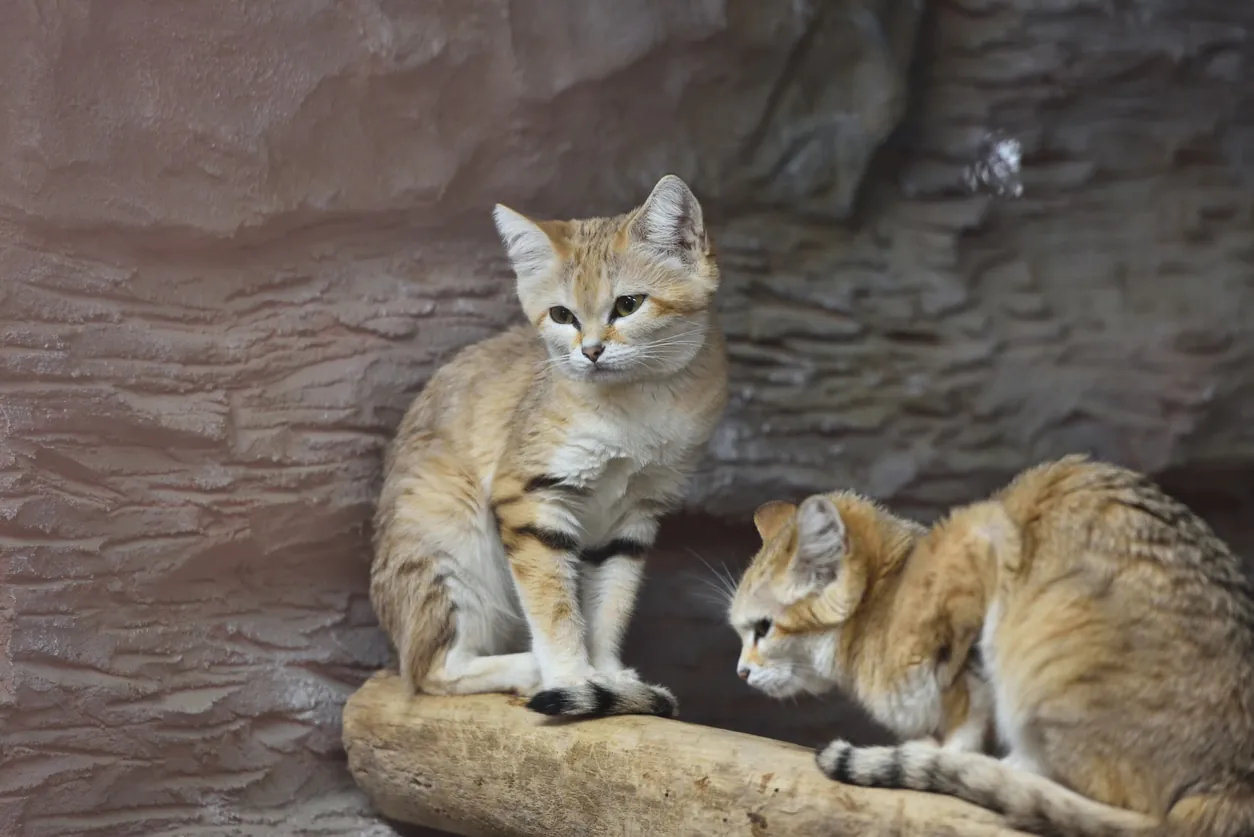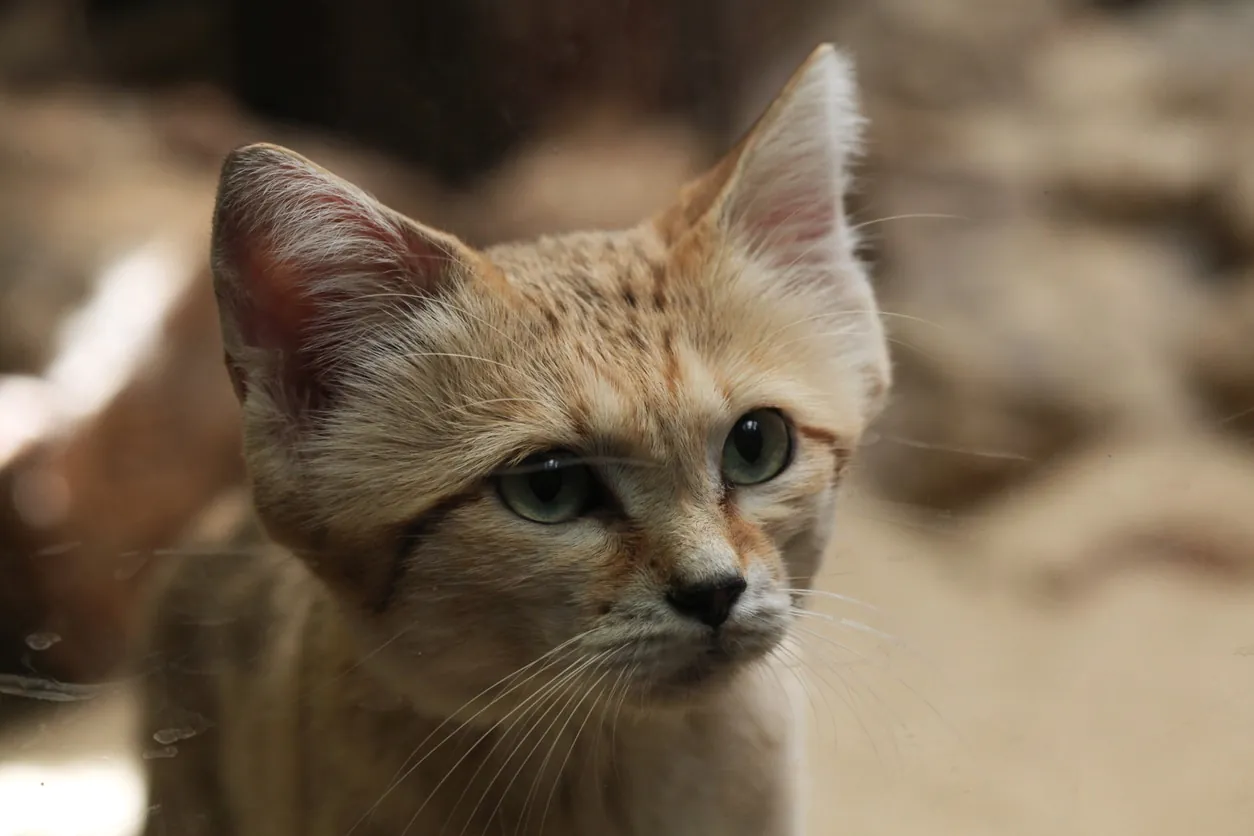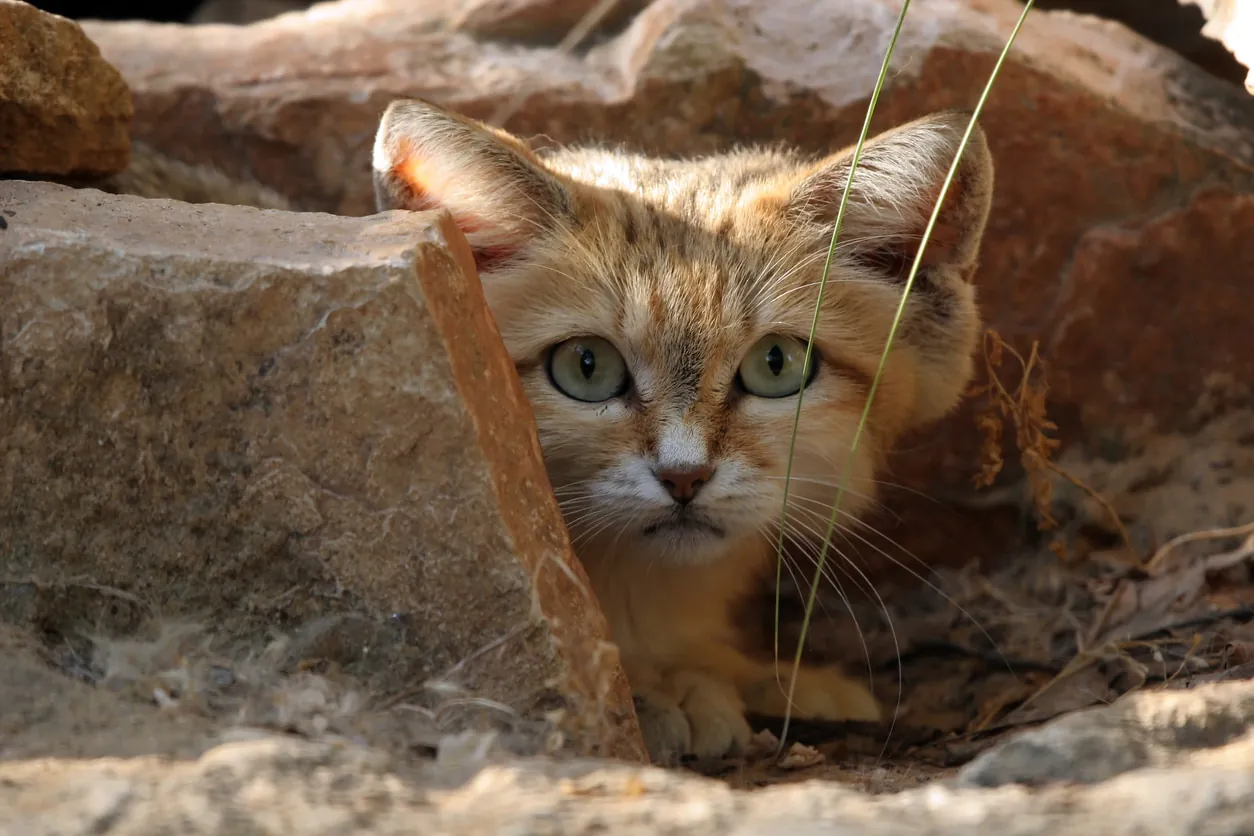After putting Pallas’s cat in the spotlight, it’s the sand cat’s turn to be in the spotlight. Also called desert cat, it is accustomed to arid environments, extreme climates (from -5 to more than 50 degrees) and is found mainly in North Africa. Here’s how to find out more about this particularly intriguing animal.
His appearance
It could almost be confused with a domestic cat as he is cute. However, certain particularities distinguish it from its cousins. Indeed, it has several black bands on the top of its legs, but also at the end of its tail.
Its head is rather triangular and flattened on top with large, well-spaced ears. Its coat is thick, sand-colored, with brown and gray tones on the back. His eyes are very round and he has a dark line starting at the outer corner of his eyes and progressing to the middle of his cheeks.
Living in environments that can be very hot, the desert cat has large tufts of hair on its pads. This protects it from possible burns due to the temperature of the ground.

This miniature feline can measure from 45 cm to 58 cm long. Its weight varies between 1,5 et 3,5 kg for the strongest and its height at the withers oscillates between 25 et 35 cm.
Its characteristics
Very solitary, the wild cat is rarely in a troop. In fact, it is found with its congeners only during reproduction periods. The female is also pregnant for two months two to three little ones who become completely independent after 6 months. However, mortality risks are high during First 30 days. Furthermore, they are prey to several animals, but can also be abandoned by their mother, which immediately makes them very vulnerable.

Living mainly at night, this wild feline hunts lizards, but also certain rodents and insects. During the day, it mainly rests in its burrow or under brush. However, he does not have much food in the desert and so he often makes do with what he can find, sometimes even eating snakes. Water is also very rare and its main source is found in its various prey.
An endangered species
In captivity, the sand cat can live a good ten years. Unfortunately, in the wild, this species does not escape trafficking created by humans. They can be hunted for their furbut also captured to then be sold as pets. These practices endanger this wild cat and reduce the number of their population every year. Furthermore, they are also the target of wild dogs and other surrounding animals.

And you, did you know the sand cat? Don’t hesitate to respond to us in comments!


